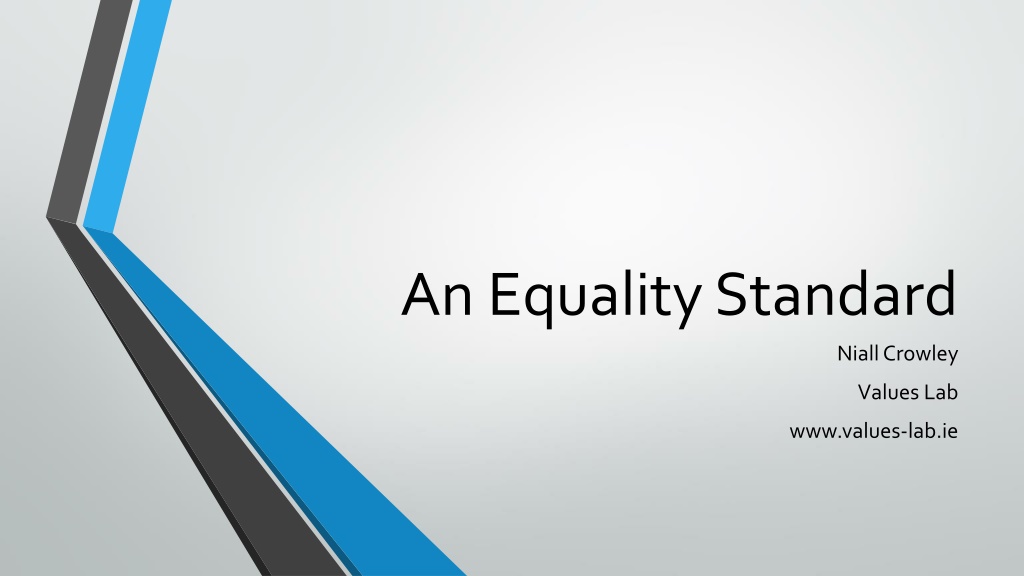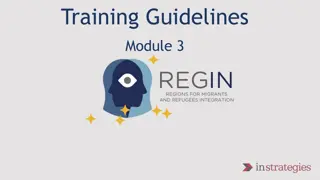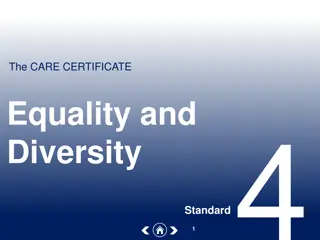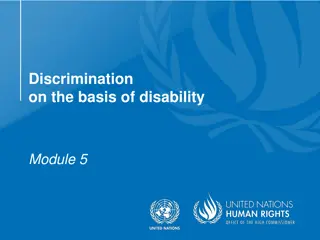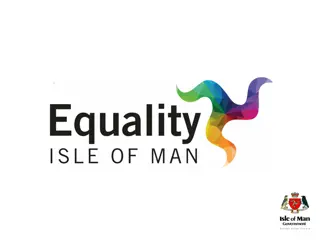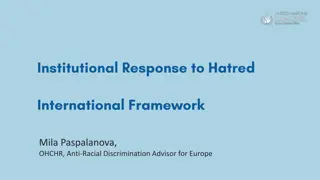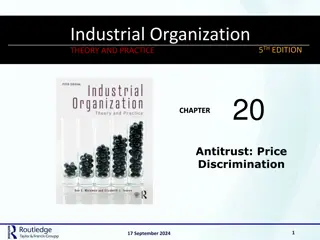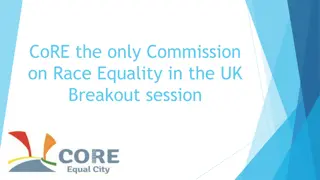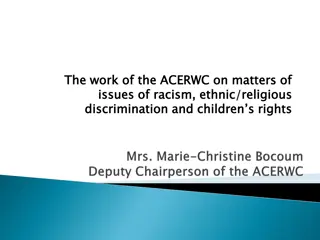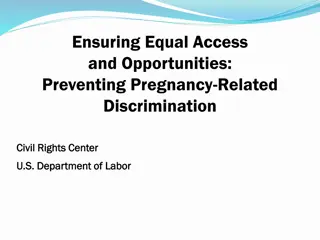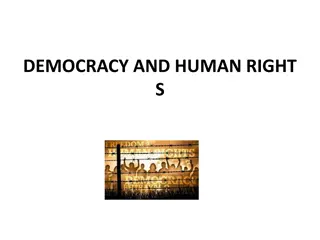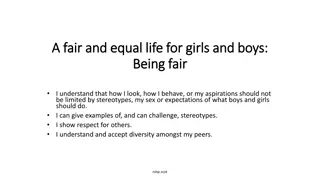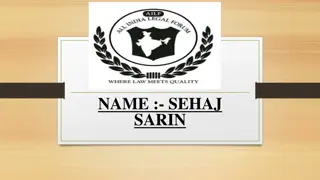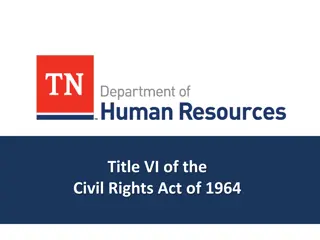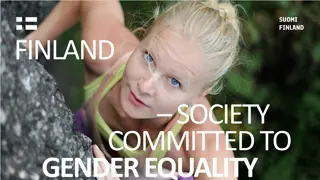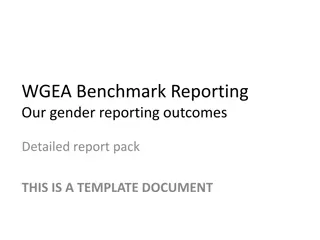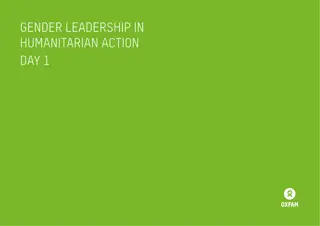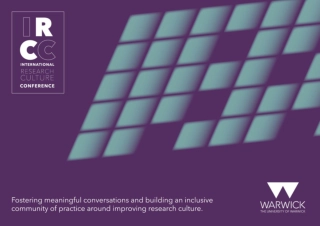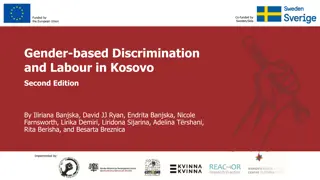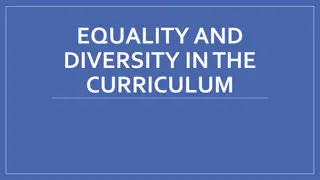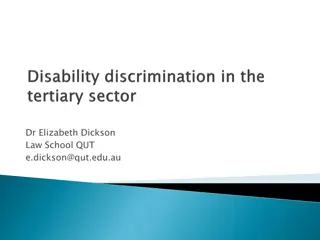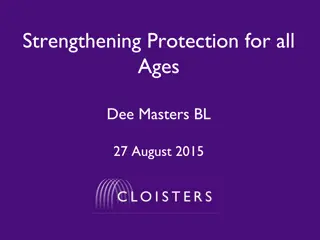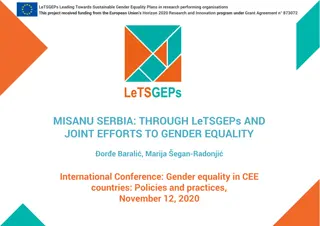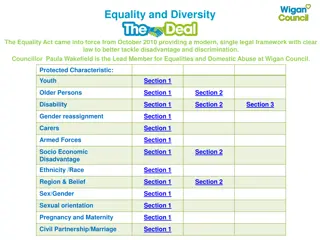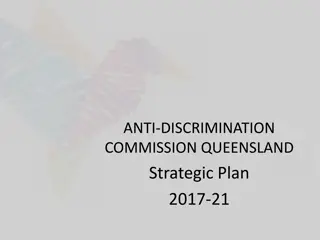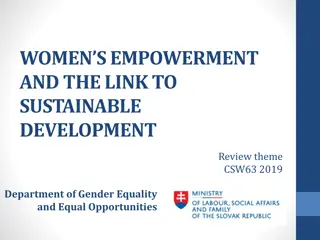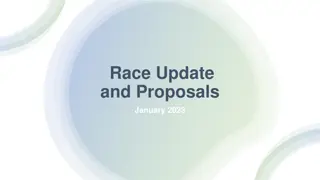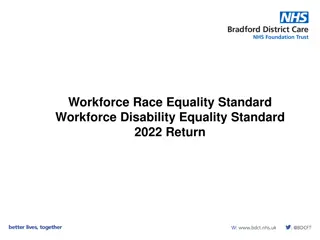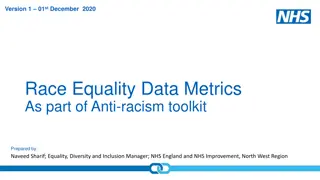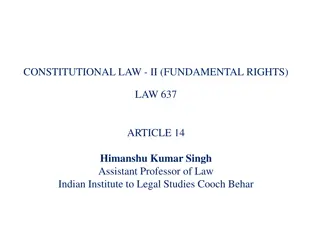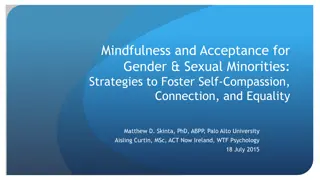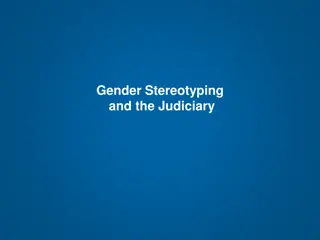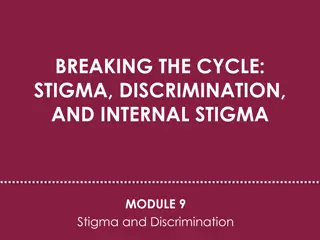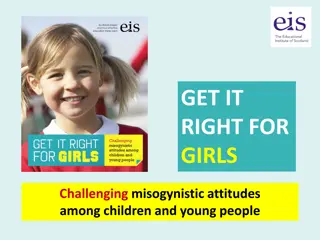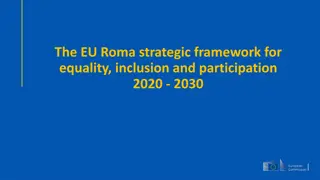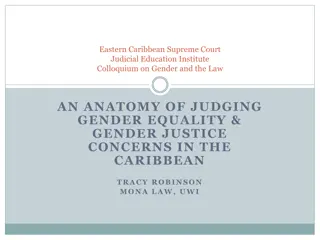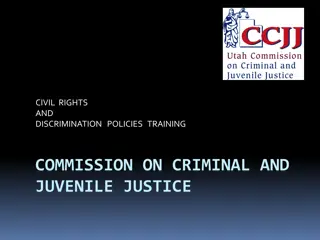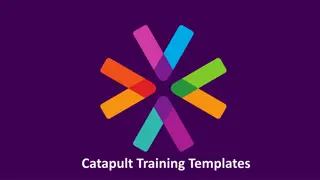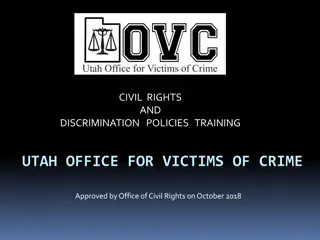Promoting Equality and Non-Discrimination: Insights and Strategies
Explore the concept of equality and non-discrimination through workshops, policies, and values. Learn about direct and indirect discrimination, harassment, and reasonable accommodations. Dive into the ambition for formal and substantive equality, seeking change in access, representation, and relationships. Discover the importance of fairness, tolerance, and recognizing and valuing differences.
Download Presentation

Please find below an Image/Link to download the presentation.
The content on the website is provided AS IS for your information and personal use only. It may not be sold, licensed, or shared on other websites without obtaining consent from the author. Download presentation by click this link. If you encounter any issues during the download, it is possible that the publisher has removed the file from their server.
E N D
Presentation Transcript
An Equality Standard Niall Crowley Values Lab www.values-lab.ie
Workshop Equality and Non-Discrimination Values and Motivation Equality Infrastructure An Equality Policy
Word Association Equality
Non-Discrimination Direct Discrimination: Treat a person less favourablythan another is, has been or would be treated in a comparable situation o On grounds of gender and gender identity, racial or ethnic origin, membership of the Travellercommunity, age, disability, religion or belief, sexual orientation, civil status, family status Indirect Discrimination: Apparently neutral provision, criterion or practice would put persons from a specific ground at a particular disadvantage compared with other persons o Unless provision, criterion or practice is objectively justified by a legitimate aim and the means of achieving that aim are appropriate and necessary
Non-Discrimination Harassment: Unwanted conduct related to the ground takes place o With the purpose or effect of violating the dignity of a person and of creating an intimidating, hostile, degrading, humiliating or offensive environment. Reasonable Accommodation: take appropriate measures to enable a person with a disability to have access to, participate in, or advance in employment, or to undergo training, or to access or participate in a service o Unless such measures would impose a disproportionate burden on the employer or service provider
Ambition Formal Equality oFairness coexists with inequality oTolerance coexists with contempt
Ambition Substantive equality: o Achieve change in the situation and experience of groups o Value difference Seek change in access to and distribution of: o Resources jobs, income, public goods o Recognition - status and standing. o Representation - power and influence. o Relationships - care, respect and solidarity
Motivation Values motivate us as individuals oValues are not always conscious oValues guide our attitudes, choices, and behaviours We all share values oWe prioritise different values
Motivation Guide the purpose, policies, and activities of our organisations oInform the issues that organisations prioritise oShape the way organisations work on these issues oImplicit value base vs. explicit value base
Motivation Behind every outcome or output of our organisation oThere is a body of practice or a pattern of behaviour oThat is based on the procedures or systems of an organisation oThat are rooted in the values held by the organisation
Our Values What values motivate our organisation? oPurpose why we exist, our vision oProcess how we work and relate oOutcome change we seek, impact Where are they held or expressed?
Our Values Top three dominant values Values that get least expression Values expressed well in some areas of our work but not in others
Values that Connect & Reinforce AUTONOMY DIGNITY Human Rights INCLUSION Equality DEMOCRACY SOCIAL JUSTICE
An Equality Statement A template to assist planning, management and evaluation oThe equality values that motivate us oWhat the equality values mean oWhat we seek to achieve in relation to each of these values for each of our functions
Equality Infrastructure What drives equality and non-discrimination in your organisation?
Equality Infrastructure Ad-hoc approach: oFocus on the short term and current activities oReactive and piecemeal action to deal with any issues that arise oRely on the good will and commitment of individuals to champion values oAssumption of shared values within the organisation
Equality Infrastructure Planned and systematic approach: o An equality statement o Equality policies o Equality and diversity training o Responsibility for equality o Planning for equality Plan & Impact assessment o Monitoring - Data o Structured engagement
Equality Policy Why? Scope? Process?
Preparing an Equality Policy Scope Employer, service provider, communicator Focus Non-discrimination, diversity, equality Participative In partnership with staff and host organisations, in consultation with representative organisations Research What have others done? Assess current situation capacity, policies, challenges
Equality Policy Put equality and human rights values into practice in operations Establish standards for the way we work Identify how we ensure these standards are realised Guide operations as oEmployer paid and voluntary oService provider volunteers to host organisations & project supports oCommunicator promotion, advocacy
Employer Recruit and advertise Advertisements, application forms, encouragement Interview Interview, interviewers, monitoring, making adjustments, positive action Job orientation and induction - Awareness, staff handbook, line- management, adjustments Promotion and progression Records, career development, flexible arrangements, equal pay, job appraisal, dismissal
Service Provider Relationship with host organisation criteria for selection, shared standards, manner of engagement, decision-making, process for provision of support, monitoring Supporting projects criteria for selection, assessment process, shared standards, manner of engagement, process for provision of support, monitoring Platform management shared standards, manner of engagement, monitoring
Communicator Values Engaging values Messages Communicating commitment Materials Take account of diverse audiences Channels of communication Take account of diverse audiences Feedback
Implementing an Equality Policy Responsibility Communication Equality infrastructure Monitor and review
